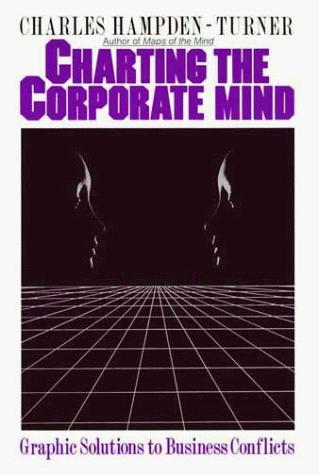Charting the Corporate Mind – What’s in the book
In my last post I had mentioned my rediscovery of the book, “Charting the Corporate Mind” by Charles Hampden-Turner (CHT), and how I find the whole topic of dilemmas particularly relevant to my practice of Strategic Impact Making.
I am documenting here some of the key points that I see as pertinent and noteworthy. While this is not a book-review, I will also make observations about how I see dilemmas playing a role in complex situations where leaders have to make strategic choices.
The Introduction by Ronnie Lessem in an interesting read in itself. Most people might not know of him, but during the 90’s when this book was written, he too was considered a Mangement Guru.
The author CHT is taking on an ‘existential’ challenge most managers face – having to make difficult choices from among myriad complex alternatives. CHT has separately written about his vision of the Radical Man.
A manager is a social being in relationships with others – their capacity for synthesizing, symbolizing and exploring frees them from being ‘stimulus bound’. Such capacity permits them to rebel against the absurdity of atrophying cultures and empty forms and enables them to create new meaning and renew themselves in their environment.
He goes on to list other qualities about this ‘Radical Man’ manager, such as quality of perception, self-awareness etc., but the one I found interesting was something about ‘suspending their cognitive structures, permitting their own structures to crumble in the face of contradiction.
This is a quality that will be pertinent to the issue of reconciling and resolving dilemmas. This is the idea in Strategic Design – one discovers the complexity that underlies a seemingly simple situation, that it has many dimensions and scales – and often issues that do not seem to reconcile easily. These dimensions then must be brought into a dialectical process – perhaps that is the process of making/prototypiing – that then tries to find a reconciliation between various dilemmas – the only way one can do that is to perhaps transcend.
Another interesting thought goes – ‘When there is no initial dilemma, there is no gain from designing a solution’. This is for me the starting step of the Meta-Design Process, the one I refer to as Q0 – something you must do before you even engage on a Strategic Impact journey – The need to clearly identify the challenge that creates a Case for Action.
In critiquing the use of Profit as a measure, he highlights why it falls short, mostly in systemic terms as not serving the cause of organizational learning, such as, it comes too late for it to help in the learning, it is too narrow in its scope (the system has many more dimensions to pay attention to), there might be other things more important and that it does not deal with societal or environmental issues.
Here is another interesting statement – The hunt for the unicorn is a doomed quest – no pure unambiguous essence of virtue exists.
We are like jugglers he says – the more balls there are the more we are likely to drop them if we get fixated on just one.
CHT, as the book title suggests, uses Charts to make the dilemmas Visible, something people can periodically review to check progress. I have personally used such visualization in managerial group setting and confirm how effective it is for faciliating conversations about contentious complex topics.
The journey of resolving dilemmas has a direction – towards an ever richer synthesis of values, towards mounting complexity, towards packages of knowledge more intensely and aesthetically organized, and towards the expansion of the mind itself.
In essence, dilemmas are an existential reality, resolving them requires a certain mindset – the kind a ‘Radical Man’ possesses, particularly in the sense of being willing to set aside cognitive structures, recognizing the need to use devices to facilitate conversations among diverse stakeholders and finally to see the whole proces of resolution and reconciliation as a learning journey.

